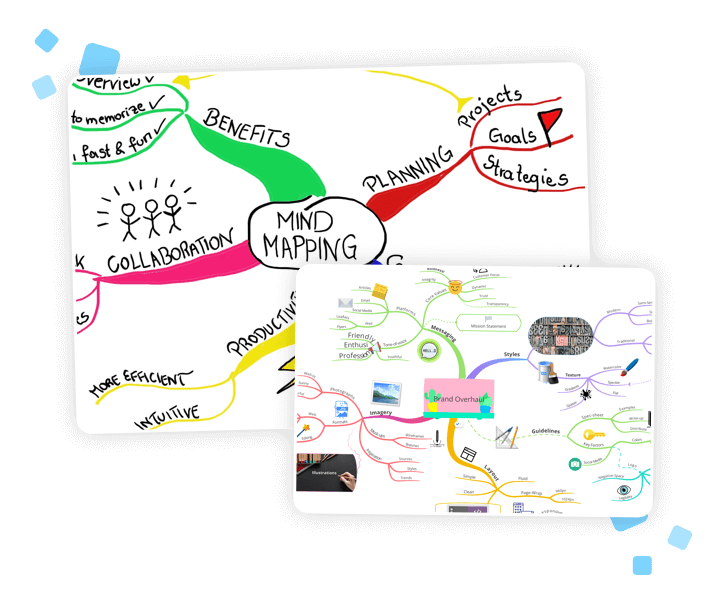August 14, 2024
What is a Mind Map and Why is it Useful?

A Mind Map is a visual diagram where thoughts, ideas or facts are laid out around a central theme so that you can clearly ‘see’ their flow across different levels. It makes use of lines, symbols, words, colour, space and images according to well-documented concepts about how the brain works.
A Mind Map has five essential characteristics:
- The main subject or ‘theme’ of the Mind Map is summarised as a central image.
- The major topics or ‘headings’ of the subject radiate out from the central image in all directions on thick curved lines known as branches. These branches represent the primary associations and levels of thought in the thinking process i.e. the Basic Ordering Ideas (BOIs).
- A key word or image is placed on each line / branch.
- From the main branches, secondary topics or levels of thought flow out on thinner lines like ‘twigs’ connected to branches of a tree. These are sub-branches. As new associated ideas come to mind or new facts are revealed during the Mind Mapping process, even further sub-branches can ‘grow’ outward from the map organically.
- The main branches and sub-branches form a natural, connected structure starting from the centre and extending outwards.
Using this simple process an exponential number of related ideas can be quickly produced with hardly any mental effort!
A Mind Map becomes even more powerful when:
- Single key words or headlines are used to label branches precisely. This stimulates more expansive connections in the brain, boosting creativity and concentration. It’s also far easier to remember single words and striking headlines than to remember long sentences.
- Images and symbols attract the eye and make the subject more meaningful. They also help you to memorise more effectively – what you see, you remember!
- Relationship arrows / links show where information in one part of the Mind Map relates to information in another part. This helps you see how different topics connect with each other across the map.
- Highlights / boundaries make specific topics or ideas in your map stand out visually against the rest of its content. This makes them easier to remember and communicate to others.

Why are Mind Maps Useful?
Mind Maps have lots of advantages over linear methods of capturing notes and recording ideas (i.e. text based lists and outlines):
- With a Mind Map, you can promptly identify and understand the ‘shape’ of a subject, and the way that pieces of information fit together. This is because Mind Mapping allows you to visually define the hierarchy and categorisation of a subject.
- A Mind Map is fast to create and no effort is wasted. The use of branches, key words, colour and images builds a structure that engagingly conveys the meaning of a subject using only about 3% of the words it would take if you were using normal linear methods for capturing and storing information. A great time saver!
- A Mind Map is also much more compact than conventional notes, usually taking up only one side of paper so you can review it at a glance and jump straight to the parts you need. All the added bonuses such as colour, visual images and key words make it far easier to remember and recall than a linear list.
- It’s created in an organic and flexible way – connections can be made between any items and new ideas can be added in any direction. If you want to include more points in the Mind Map after you’ve drawn it, then you can easily add them in without disrupting the rest of your map.
All this means that Mind Maps are handy for tackling just about anything – projects, meetings, studying, writing a book, planning, note-taking, problem-solving, presenting and lot’s more. Basically any task that requires you to think or manage information!
